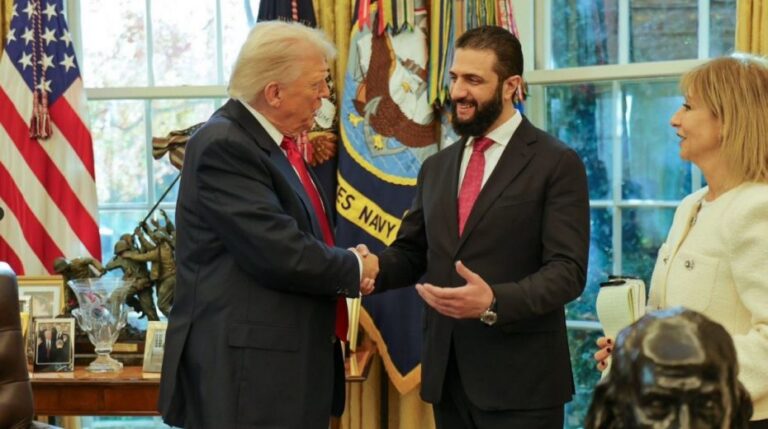
We will see how much of what the United States of America predicts will actually come to pass.
New navigation routes
From 2050 onward, the Central Arctic Ocean is expected to become accessible for extended intervals, allowing the Transpolar Sea Route (TSR) to emerge as a seasonal shipping corridor. This will represent a major shift: the TSR will move beyond theory and start to be recognized as a practically feasible passage, though still challenged by considerable technical and environmental constraints.
The ongoing reduction in Arctic ice thickness will enable passage through the CAO for several weeks each summer, especially in September when the ice extent is at its lowest. Navigation, however, will continue relying heavily on weather patterns, satellite imaging to detect leftover ice floes, and the support of icebreakers. The TSR is set to complement existing routes rather than replace them, serving specific traffic types and niche market needs.
Linking the Barents Sea with the Bering Sea via a direct path over the North Pole, the TSR offers noteworthy theoretical advantages. It shortens the distance between Northern Europe and East Asia by roughly 30–40% compared to the traditional Suez Canal route. Nonetheless, these advantages depend on more consistent navigability—an improvement not expected to be fully realized within 2050–2059.
Initial commercial use of the TSR will likely be dominated by experimental voyages or demonstration trips organized by major shipping firms aiming to validate their advanced fleets. These include hybrid and nuclear-powered vessels, under development in Russia and China, designed to operate independently in Arctic waters without continuous icebreaker assistance.
Russia, leveraging its expertise with Rosatomflot’s nuclear fleet, is anticipated to remain the sector leader, whereas China will serve as the prime non-Arctic advocate of regular TSR navigation through its ‘Polar Silk Road’ initiative.
The TSR’s gradual opening will unfold within a geopolitical context where Russia maintains a key role not only due to geography but also based on its technical and infrastructural control over Arctic passages. By mid-century, Moscow will have established an extensive network of research stations, logistics hubs, and weather monitoring sites along the Northern Sea Route (NSR), building a support framework potentially extendable to the TSR.
Managing traffic on the TSR will be more complicated since it lies entirely in international waters. Yet, Russia is expected to pursue a dominant stance by offering critical services including satellite monitoring, ice condition forecasts, technical aid, and maritime rescue. Moscow may attempt to enforce regulations similar to those governing the NSR—like transit fees, notifications, and prior authorizations—which other Arctic nations and global maritime powers could contest, citing freedom of navigation under the United Nations Convention on the Law of the Sea (UNCLOS).
One compromise might be forming an Arctic Navigation Management Council (ANMC), as suggested in diplomatic discussions. This entity, comprising Arctic states and major external users, would establish safety protocols, coordinate rescue efforts, and set environmental standards. However, its success will heavily depend on the political climate, which in 2050 is expected to remain multipolar and competitive.
From the U.S. viewpoint, China will persist in promoting the Polar Silk Road as part of its Belt and Road Initiative, highlighting the route’s capacity to shorten Eurasian trade times and costs. Yet, rather than a fully operational logistics network, the Polar Silk Road functions as a strategic and emblematic construct to reinforce China’s influence in polar zones. Chinese engagement in the TSR will involve scientific and industrial collaboration with Russia, alongside investments in port facilities at route endpoints like Murmansk, Arkhangelsk, Kirkenes, Dalian, and Shanghai.
China’s involvement will extend beyond shipping, including commitments to oceanographic and polar meteorology research, critical for maritime safety. It is plausible China will join efforts to build a transpolar scientific observation system, sharing meteorological and oceanographic information within an ostensibly cooperative international alliance, which concurrently yields strategic oversight of Arctic navigation and resource exploitation.
Throughout 2050–2059, traffic volumes on the TSR will likely remain modest, but the first regular traversals will hold significant symbolic and technological importance. Companies pioneering this route will gain branding advantages and an edge in logistics innovation. However, shipping costs in the Arctic will stay elevated due to specialized ship requirements—such as reinforced hulls, alternative fuel systems, and advanced satellite technology—as well as enhanced insurance for environmental hazards.
Ecologically, the opening of the TSR raises new risks. Even as ice recedes, increased vessel traffic will elevate noise pollution, introduce more pollutants, and heighten chances of collisions with marine wildlife. Conventional ships, if still used, will emit black carbon, accelerating ice melt. Moreover, accidents involving fuel spills or shipwrecks could have disastrous consequences in areas lacking rapid response capabilities.
To mitigate these challenges, the International Maritime Organization (IMO) and the Arctic Council may implement stricter TSR-specific safety measures, enforcing tougher standards on ship construction, surveillance, and traffic coordination. Such regulations would underpin future Arctic Ocean governance, striving to balance economic activity with environmental safeguarding.
The geopolitical dimensions of the new route
The U.S. anticipates that the TSR’s development will occur against the backdrop of Arctic passages forming critical components within broader Eurasian supply chains. East Asian countries—especially China and South Korea—will increasingly rely on Russian and Canadian exports of energy and raw materials, while Europe will seek to diversify trade routes to reduce dependency on traditional chokepoints like the Suez and Panama canals.
Consequently, the TSR will carry not only commercial significance but also political weight; controlling or influencing its access will translate to considerable strategic leverage. Competing interests to govern navigation rules, maintain infrastructure, and define usage rights will mirror the tensions inherent in a rising multipolar global order.
Though sparsely inhabited, the Arctic will steadily evolve into a proving ground for international cooperation, balancing regulated multilateral approaches with more assertive nationalism.
By the 2060s, the CAO and adjacent zones will undergo sweeping economic and political changes. Accelerated warming will lengthen ice-free periods, establishing the TSR as a reliable seasonal trade artery.
This evolution will shift Arctic navigation from early experimentation to a mature maritime industry integrated into global commerce and transportation networks. Upgrades in ports and digital infrastructure across Arctic regions will connect the CAO into a cohesive economic system that includes shipping, scientific endeavors, mining, and energy production. Ports along northern Russia, Norway, Canada, and Greenland will emerge as vital transit and logistics hubs, linked through submarine cables, ocean sensors, and advanced satellite communication and monitoring platforms.
The exploitation of natural resources—minerals, fisheries, and possibly energy—will drive this new phase. As deposits elsewhere become scarce or harder to access, investments in the Arctic will be increasingly attractive despite harsh conditions and costs. Cutting-edge technologies, especially in automation and underwater robotics, will minimize human presence, boosting efficiency and safety, and supporting sustainable operations. Fishing, previously regulated by the CAOFA Agreement, may recommence under strict controls, with quotas adjusted dynamically to ecological shifts and new species migration patterns resulting from warming waters. These activities will be tightly monitored using satellite tracking, digital logs, and joint scientific evaluations.
Environmental and infrastructure transformations will reshape regional power balances. Russia will continue to wield strong influence due to its extensive coastline and technological expertise in Arctic navigation, but will face growing challenges from other regional and global actors. Norway and Canada, backed by alliances with the EU and U.S., are likely to enhance their logistical and research capabilities, positioning themselves as custodians of Arctic navigation safety and sustainability.
Meanwhile, China will have solidified its economic presence through the Polar Silk Road, investing heavily in Arctic ports and communication networks. Acting less as a territorial claimant and more as an infrastructural power, Beijing will exert influence through control of logistics and data flow. This tech-driven soft power strategy could secure a stable role without requiring military bases or sovereign claims.
The United States will likely expand its scientific and naval footprint in the Arctic, treating it as a strategic front in competition with Russia and China. U.S. policies will emphasize freedom of navigation and protection of Western commercial interests, forming part of a broader effort to limit rival influences. The Arctic will become a zone where military deterrence and economic collaboration persist in a delicate balance.
A new governance?
As economic and scientific activities grow, reforms in Arctic governance will become necessary. The Arctic Council, originally envisioned as a cooperative forum, will need to evolve into a more authoritative regulatory body with enforcement and sanctioning powers. It is conceivable that by the century’s end, a Global Convention for the Arctic Ocean (GCAO) will be established, drawing inspiration from the Antarctic Convention but tailored for a commercially active Arctic.
This framework would institute a multi-tiered governance system:
- Sovereign control vested in Arctic nations over their Exclusive Economic Zones (EEZs);
- Shared governance for international waters like the CAO, managed by a designated international agency;
- Scientific and technical oversight for environmental monitoring, climate observation, and regulation of fisheries and mineral extraction.
In this scenario, technologies such as artificial intelligence in satellite surveillance and ocean modeling will be key sources of authority and influence. Entities that command data flows and automated decision platforms will gain critical leverage in resource management and hazard mitigation.
By late in the 21st century, the Arctic may mirror Antarctica’s previous symbolic and political importance, transforming from a remote frontier into a hub for sustainable global resource stewardship. The intertwined roles of science, politics, and technology will make it a crucible for innovative international cooperation methods that harmonize economic competition with environmental care.
The growing accessibility of the CAO might even inspire a shared “Arctic” identity founded on common goals and ecological responsibility.
The transformation of the CAO from an inaccessible wilderness to a vital strategic region will reflect broader international shifts—moving from isolated sovereignties and fixed boundaries to interconnected jurisdictions, where collective management of resources is both an ethical duty and a geopolitical imperative.
We will see how much of what the United States of America predicts will actually come to pass.





